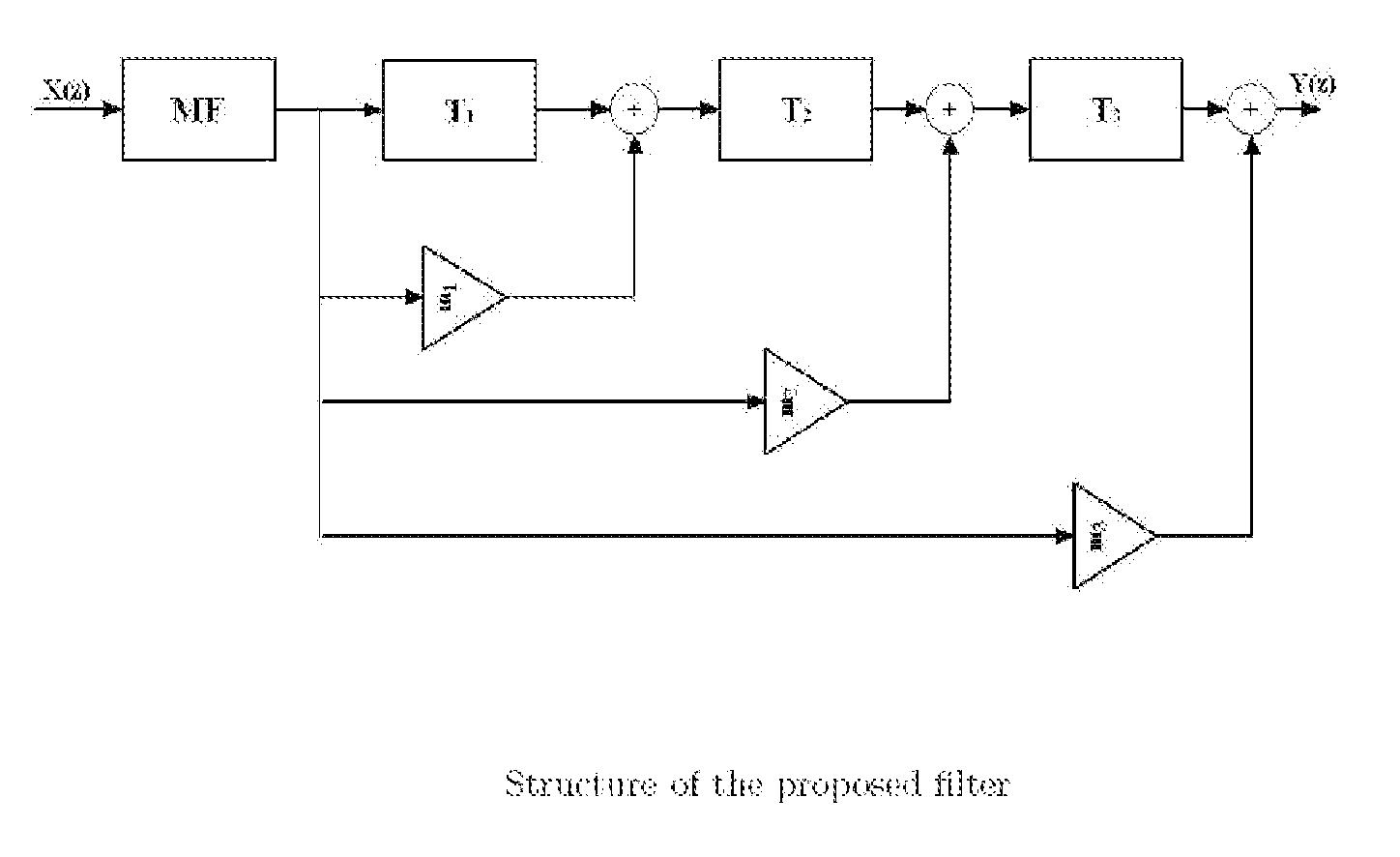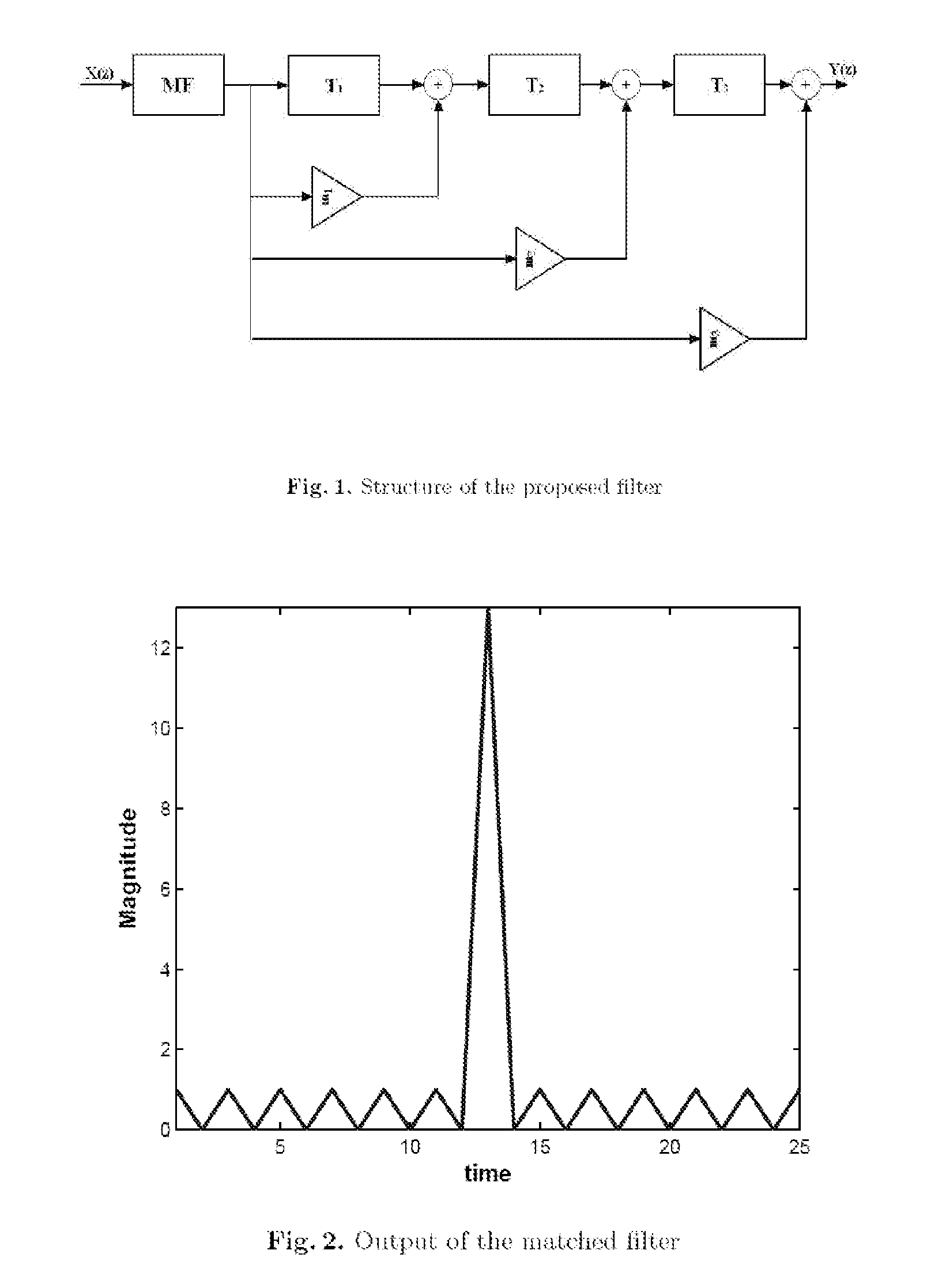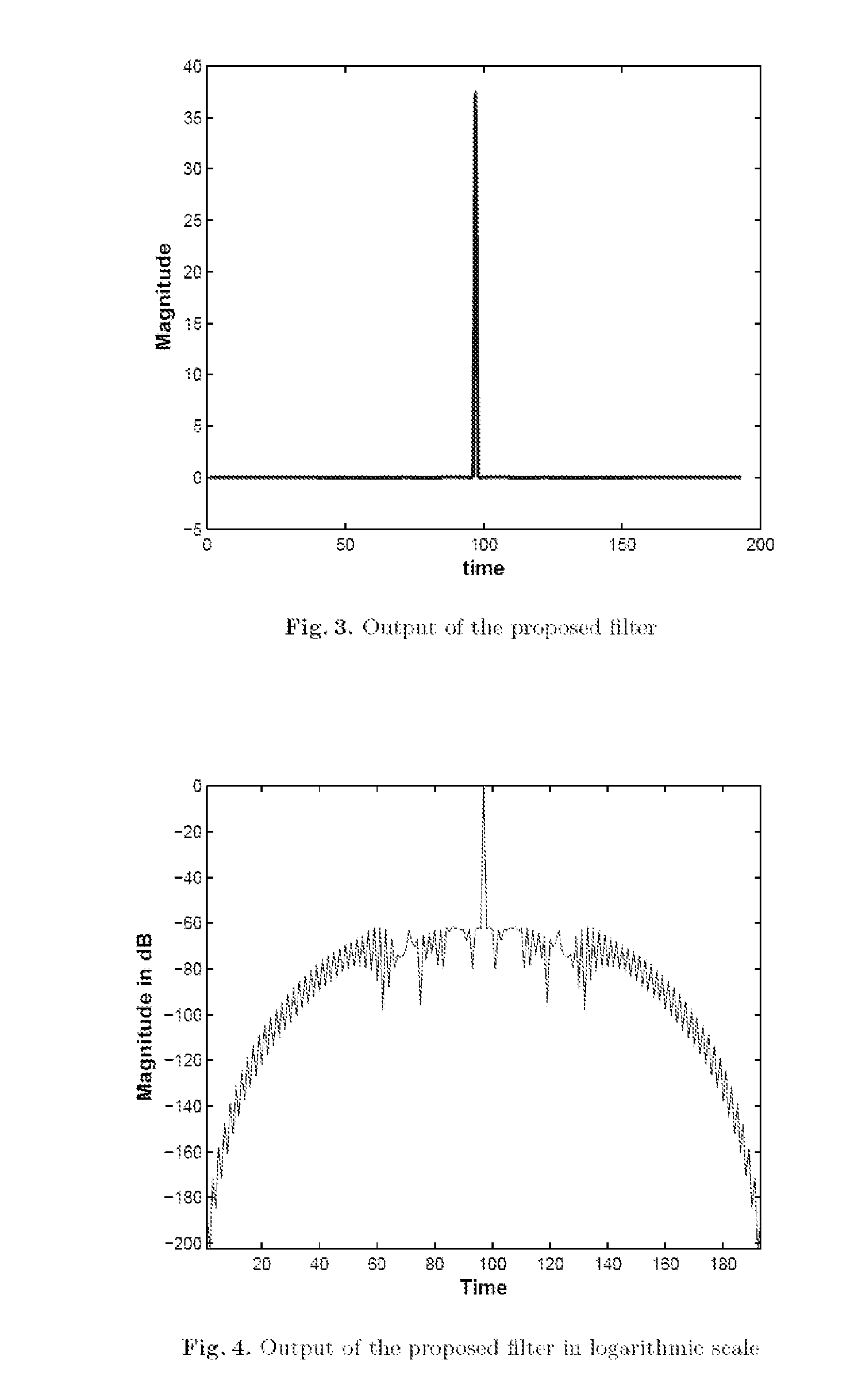Multiplicative mismatched filters for optimum range sidelobe suppression in Barker code reception
a filter and optimum range technology, applied in direction finders using radio waves, instruments, reradiation, etc., can solve the problem that the inverse filter should not be implemented directly
- Summary
- Abstract
- Description
- Claims
- Application Information
AI Technical Summary
Problems solved by technology
Method used
Image
Examples
Embodiment Construction
[0016]The proposed filter is designed as a sidelobe suppression filter placed in cascade with a matched filter. The starting point of designing the proposed filter is to obtain a multiplicative expansion of the inverse of the autocorrelation function R(z) produced by the matched filter. Let the incoming Barker code be X(z). Hence the matched filter transfer function is X(z−1) and the matched filter output is the autocorrelation function given by:
R(z)=X(z)X(z−1) (1)
[0017]R(z) is composed of a mainlobe of height N and sidelobes of peak height 1. For notational purposes, we consider the autocorrelation function R(z) to be symmetric around the origin. Hence, we denote the sidelobes as ΣSn(zn+z−n). In practice, the system should be made causal by adding appropriate delays. R(z) is denoted by:
R(z)=N+∑Sn(zn+z-n)=N[1+1N∑Sn(zn+z-n)](2)(3)
[0018]Evidently, the ideal mismatched filter should be the inverse of R(z). However, such a filter would be unstable and cannot be implemented in practice...
PUM
 Login to View More
Login to View More Abstract
Description
Claims
Application Information
 Login to View More
Login to View More - R&D
- Intellectual Property
- Life Sciences
- Materials
- Tech Scout
- Unparalleled Data Quality
- Higher Quality Content
- 60% Fewer Hallucinations
Browse by: Latest US Patents, China's latest patents, Technical Efficacy Thesaurus, Application Domain, Technology Topic, Popular Technical Reports.
© 2025 PatSnap. All rights reserved.Legal|Privacy policy|Modern Slavery Act Transparency Statement|Sitemap|About US| Contact US: help@patsnap.com



